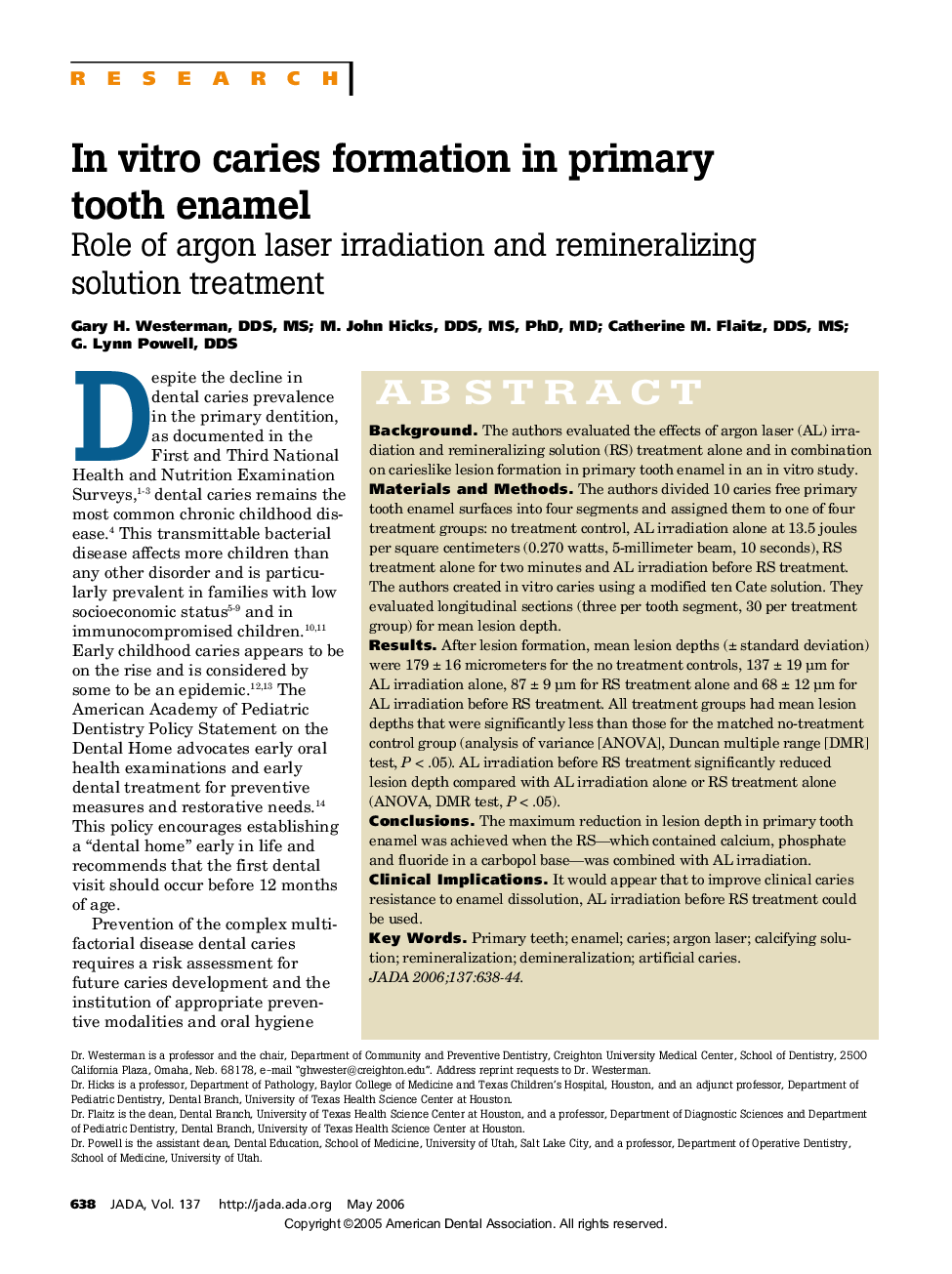| Article ID | Journal | Published Year | Pages | File Type |
|---|---|---|---|---|
| 3140655 | The Journal of the American Dental Association | 2006 | 7 Pages |
ABSTRACTBackgroundThe authors evaluated the effects of argon laser (AL) irradiation and remineralizing solution (RS) treatment alone and in combination on carieslike lesion formation in primary tooth enamel in an in vitro study.Materials and MethodsThe authors divided 10 caries free primary tooth enamel surfaces into four segments and assigned them to one of four treatment groups: no treatment control, AL irradiation alone at 13.5 joules per square centimeters (0.270 watts, 5-millimeter beam, 10 seconds), RS treatment alone for two minutes and AL irradiation before RS treatment. The authors created in vitro caries using a modified ten Cate solution. They evaluated longitudinal sections (three per tooth segment, 30 per treatment group) for mean lesion depth.ResultsAfter lesion formation, mean lesion depths (± standard deviation) were 179 ± 16 micrometers for the no treatment controls, 137 ± 19 μm for AL irradiation alone, 87 ± 9 μm for RS treatment alone and 68 ± 12 μm for AL irradiation before RS treatment. All treatment groups had mean lesion depths that were significantly less than those for the matched no-treatment control group (analysis of variance [ANOVA], Duncan multiple range [DMR] test, P < .05). AL irradiation before RS treatment significantly reduced lesion depth compared with AL irradiation alone or RS treatment alone (ANOVA, DMR test, P < .05).ConclusionsThe maximum reduction in lesion depth in primary tooth enamel was achieved when the RS—which contained calcium, phosphate and fluoride in a carbopol base—was combined with AL irradiation.Clinical ImplicationsIt would appear that to improve clinical caries resistance to enamel dissolution, AL irradiation before RS treatment could be used.
